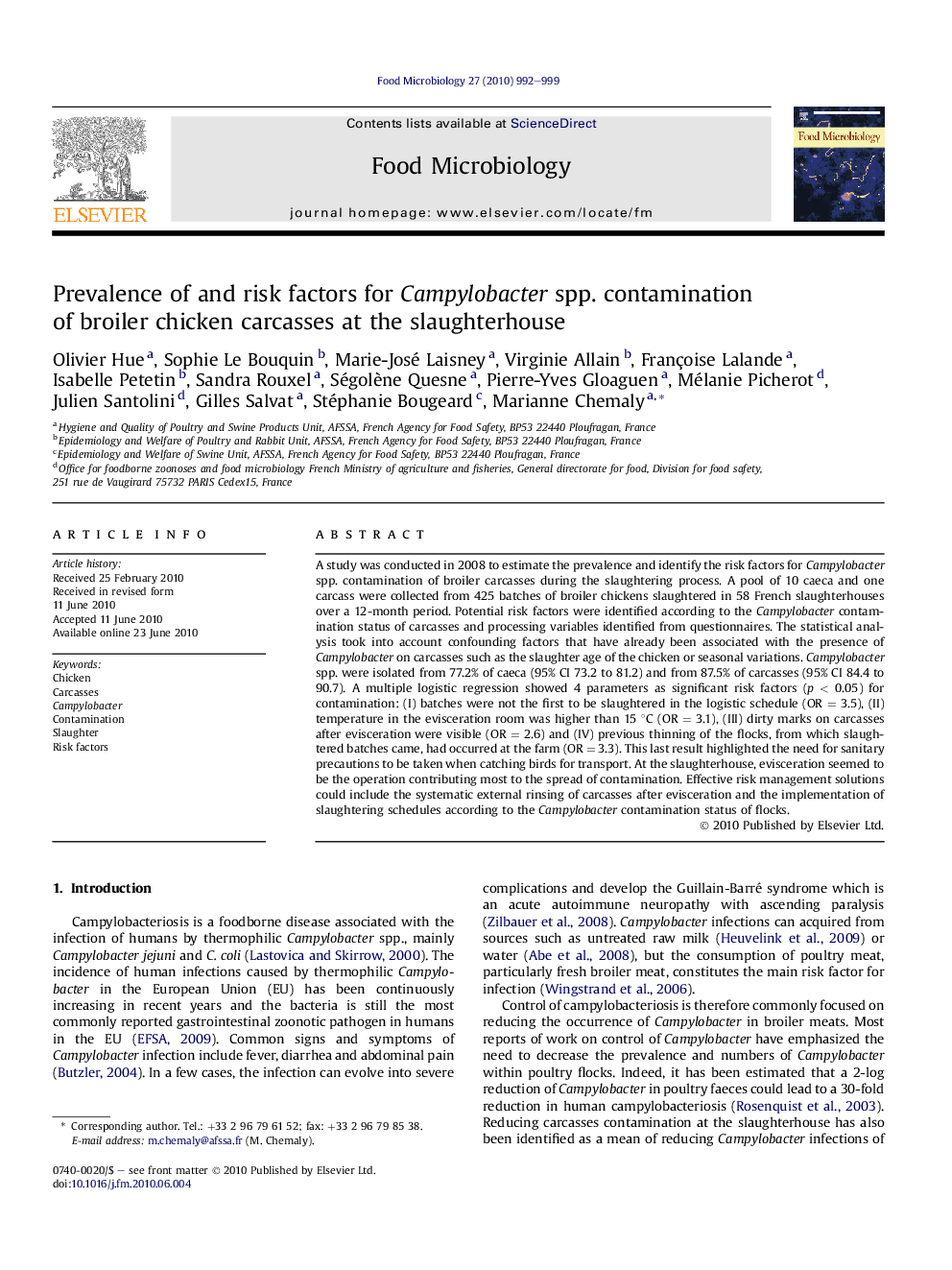| Article ID | Journal | Published Year | Pages | File Type |
|---|---|---|---|---|
| 4363339 | Food Microbiology | 2010 | 8 Pages |
A study was conducted in 2008 to estimate the prevalence and identify the risk factors for Campylobacter spp. contamination of broiler carcasses during the slaughtering process. A pool of 10 caeca and one carcass were collected from 425 batches of broiler chickens slaughtered in 58 French slaughterhouses over a 12-month period. Potential risk factors were identified according to the Campylobacter contamination status of carcasses and processing variables identified from questionnaires. The statistical analysis took into account confounding factors that have already been associated with the presence of Campylobacter on carcasses such as the slaughter age of the chicken or seasonal variations. Campylobacter spp. were isolated from 77.2% of caeca (95% CI 73.2 to 81.2) and from 87.5% of carcasses (95% CI 84.4 to 90.7). A multiple logistic regression showed 4 parameters as significant risk factors (p < 0.05) for contamination: (I) batches were not the first to be slaughtered in the logistic schedule (OR = 3.5), (II) temperature in the evisceration room was higher than 15 °C (OR = 3.1), (III) dirty marks on carcasses after evisceration were visible (OR = 2.6) and (IV) previous thinning of the flocks, from which slaughtered batches came, had occurred at the farm (OR = 3.3). This last result highlighted the need for sanitary precautions to be taken when catching birds for transport. At the slaughterhouse, evisceration seemed to be the operation contributing most to the spread of contamination. Effective risk management solutions could include the systematic external rinsing of carcasses after evisceration and the implementation of slaughtering schedules according to the Campylobacter contamination status of flocks.
